5. The Wind (2018, dir. Emma Tammi)
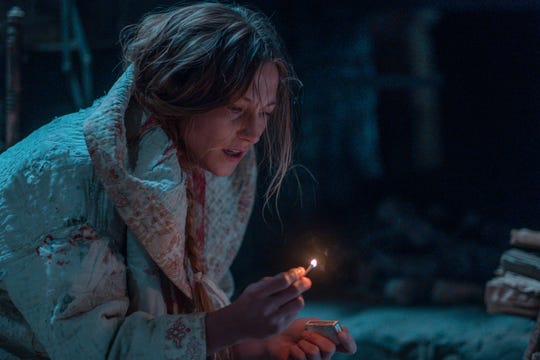
The Wind has one of the more bombastic scores of the films on this list. The film centers around a woman in her house on the prairie. As a result of the narrative’s location, the eponymous wind takes on an almost sinister quality. The wailing gusts, flapping clothes on the line, and hum of nature surrounds Lizzy, our heroine, to the degree that it almost becomes a white noise within the film. Yet, as the film continues, Lizzy’s paranoia and fear escalate.
One scene, in particular, shows Lizzy reading in her house at night. She hears a knock at the door, and when she opens it, all she hears is the wind roaring. The candles behind her blow out, and as Lizzy desperately tries to relight them, the wind kicks up in intensity, eventually kicking open the door she closed. The score doesn’t fade in during this scene until after the revelation that nobody is at Lizzy’s door. The intensity of the music thus serves to highlight Lizzy’s diminishing sanity and her growing fear, living alone on the plains, with nothing to turn to but her Bible.
The Wind is also unique because it plays with its viewer’s expectations. Unlike some other films on this list, The Wind is more ambiguous about its horror. While the film seems to imply that something supernatural is going on, there is also the distinct possibility that Lizzy’s fear, and thus the film’s suspense and horror, is derived from her isolation.
4. The Strangers (2008, dir. Brian Bertino)
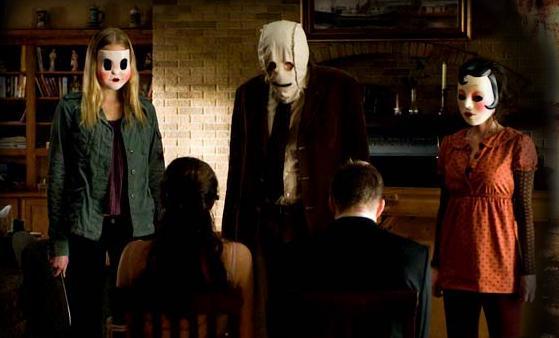
When Brian Bertino set out to make The Strangers, his goal was not to make a horror movie but a “terror” movie. The difference is that the film’s terror derives not from the typical setting – AKA, a house on a hill that holds dark mysteries – but rather from the fact that the protagonists are trapped within the house, looking out.
It’s a clever subversion of the typical horror film (though not wholly original; “home invasion” films have been around since the beginning of cinema itself, going back to D.W. Griffith’s 1909 film, The Lonely Villa). Similarly, Bertino’s approach to the film’s sound design is altered. Rather than relying solely on an unsettling score occasionally punctuated by flashes of jump scares, he uses specific sounds to break a disquieting level of silence. The film’s skipping record is perhaps the most famous example, but Bertino also utilizes scraping metal, knocks, taps, and even breaking glass. More specifically, it’s used to rip apart the film’s previously established silence. There is no swell, as other films utilize. The sound design in The Strangers is intended to be jarring and discomforting. That sudden breaking of tension gives the film its unique edge.
What’s more unique about the film is that it doesn’t feel like a cheap gimmick. Jump scares are often a filmmaker’s first resort to force a scare, but Bertino’s tension is well-earned. Plenty of scenes, including the skipping record scene, are drenched with suspense, and flurry of sound serves not just to get the view to jump out of their seat but also to rattle them to their bones.
3. The Lodge (2019, dir. Veronika Franz & Severin Fiala)
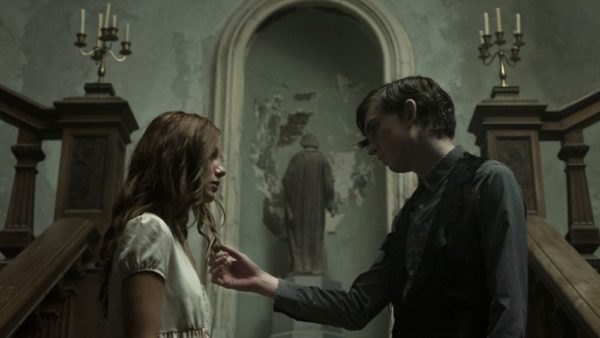
The Lodge is unique in that its narrative hinges on its approach to sound design. The film takes place in a snowy lodge, where two kids and their dad’s girlfriend (their soon-to-be stepmom) are trapped inside during a blizzard. What follows is an unsettling descent into paranoia, trauma, and fear as Grace, played by Riley Keough, hears disturbing sounds in the house at night and has visions of her past when she was in a cult.
As with many horror films, The Lodge revels in the clashing difference between silence and sound. However, directors Veronika Franz and Severin Fiala take an approach similar to Kubrick’s The Shining when setting up the lodge – highlighting how it seems large and inviting at first, then peeling back its layers. Its sound design similarly reflects this “peeling back” method, as specific motifs appear (including a haunting version of “Nearer My God to Thee,” which plays while Grace wanders around the darkened lodge).
Akin to The Wind, the sound design of this film is directly related to Grace’s mental health and her gradual spiral. But, more deviously, it’s directly connected to her past trauma within the cult. The viewer is then left to wonder whether there is something supernatural going on within the house or if Grace’s past is gradually retaking hold of her. The motif usage sets The Lodge apart, giving us direct insight into Grace’s inner dialogue without requiring the actor to say a word.
2. Cat People (1942, dir. Jacques Tourneur)
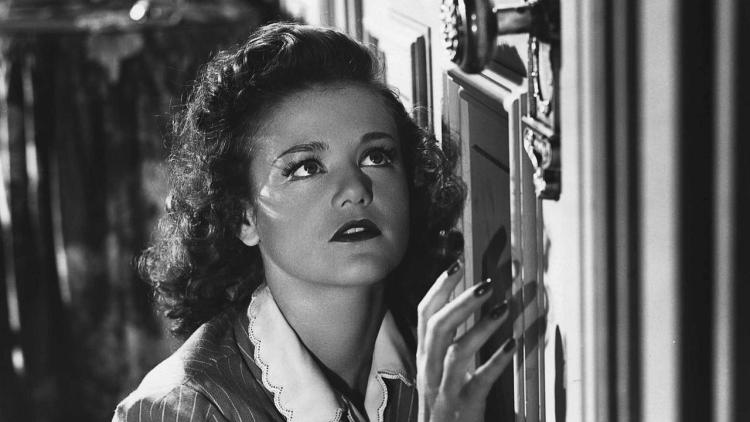
Cat People is best known for Tourneur’s remarkable usage of lighting, and for good reason. He took what, on paper, sounds like a ridiculous and silly B-movie concept, and he turned it into a genuinely eerie piece of filmmaking. Less has been said of the film’s sound design, though.
In the ’40s, while there was undoubtedly more attention paid to sound design, the focus was within the camera: cinematography, lighting, framing. When Cat People was released, sound had only been included in film for about fifteen years. As such, it was still a new technology, and while there were plenty of films that paid attention to their film’s audio, it was not the immediate focus, either.
Cat People’s sound design is uniquely subtle, especially within the context of ’40s horror filmmaking. So much of the era is defined by extravagant music scores and sudden stings and cues. It’s refreshing then, to return to this film and see that Tourneur refrained from that style. This is perhaps most noticeable in the iconic “stalking” scene, where our main character Irena walks down a quiet, empty street. In addition to relying solely on footsteps to create dread within the scene, these footsteps are distorted so that they stand out. They echo, giving the street depth and space while indicating that our main character is indeed being followed.
The stalking scene is also a brilliant example of how image and sound design work together – and, most importantly, how the latter can elevate the former. Poor construction of the stalking scene’s audio would have rendered unremarkable (or, at the very least, ineffective). When combined, they create an unsettling scene that is still spine-tingling even 80 years later.
1. Hush (2016, dir. Mike Flanagan)
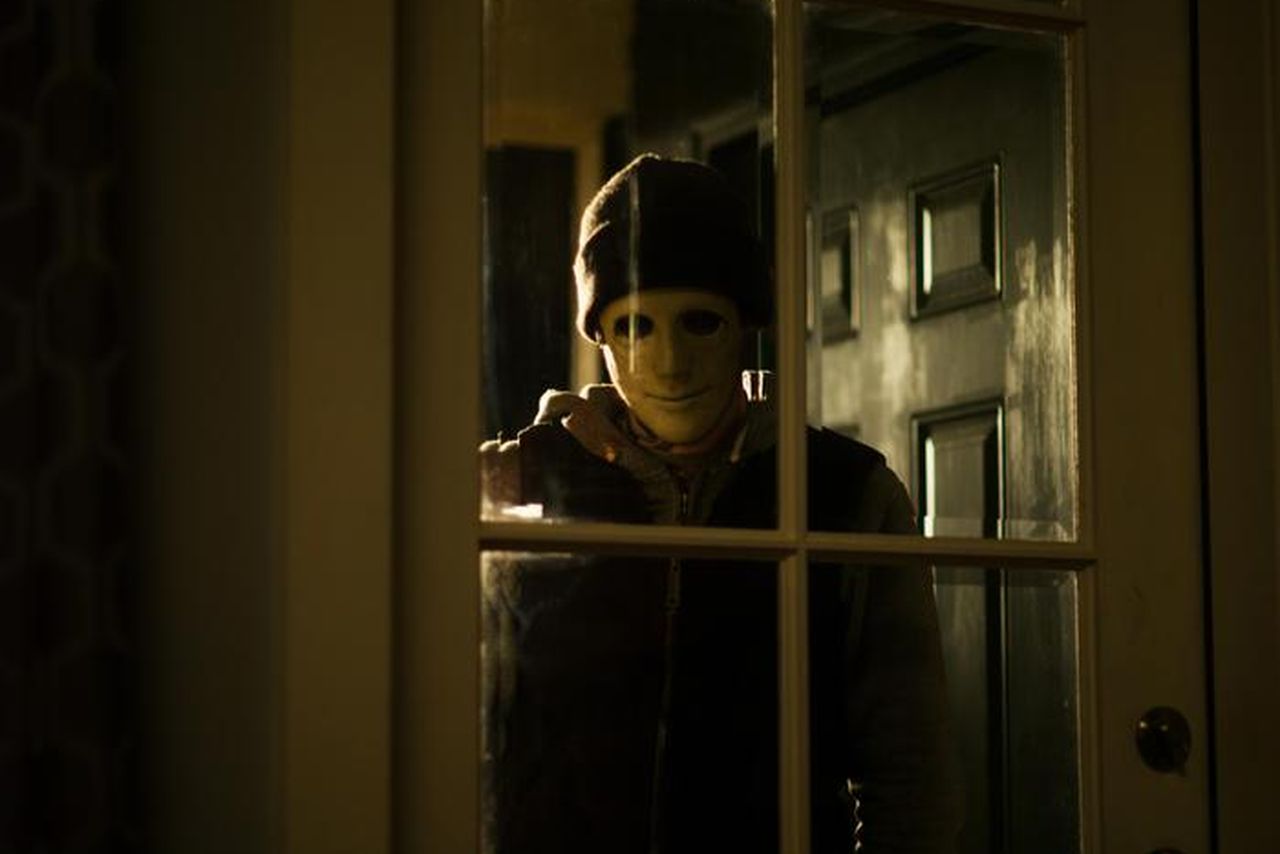
Hush is a unique film for a variety of reasons, chief of which being the way it approaches its sound design. The film is about a deaf woman named Maddie who realizes a man is trying to break into her home. Not only does Flanagan tailor his sound design to give us insight into Maddie’s emotional state and perspective, but it’s also cleverly used to feed into the plot too. For example, Maddie doesn’t know when the man is behind her because she can’t hear him. Additionally, when characters are killed, Maddie is often unaware. It creates a new dimension of vulnerability for our heroine – and it makes it more tense and exciting as the film progresses, and she fights back.
Most interesting of Flanagan’s directorial choices is his decision to shoot some of the scenes from Maddie’s perspective. The opening scene of the film utilizes this style. Maddie is cooking, but we can see from her perspective that she can’t hear the pan sizzling, the knife slicing through an onion or garlic crunching. This choice does not define the entire film, as there are large chunks where the viewer can hear everything clearly, but it’s also a clever filmmaking choice that lets us know Maddie is deaf without explicitly saying so.